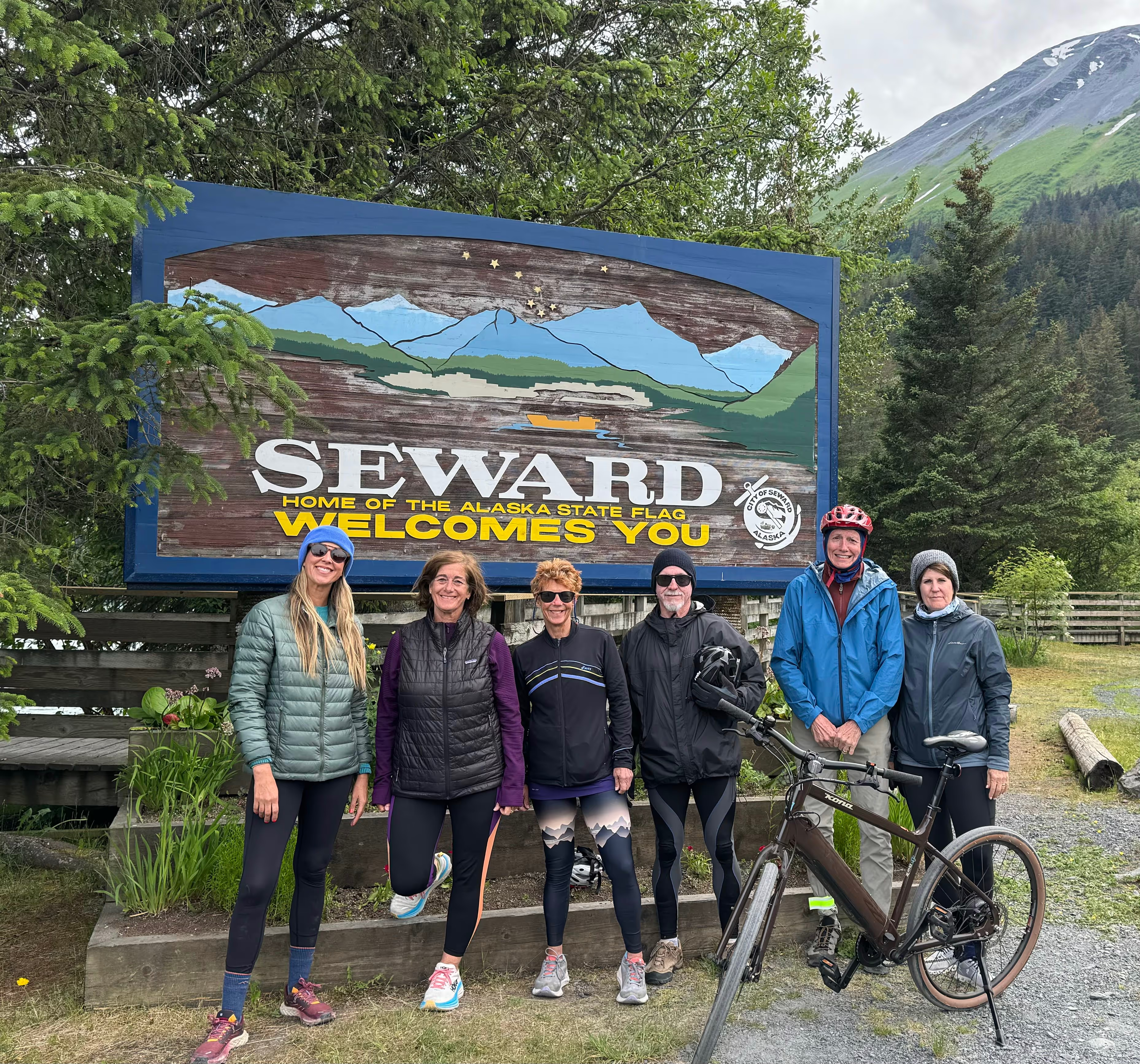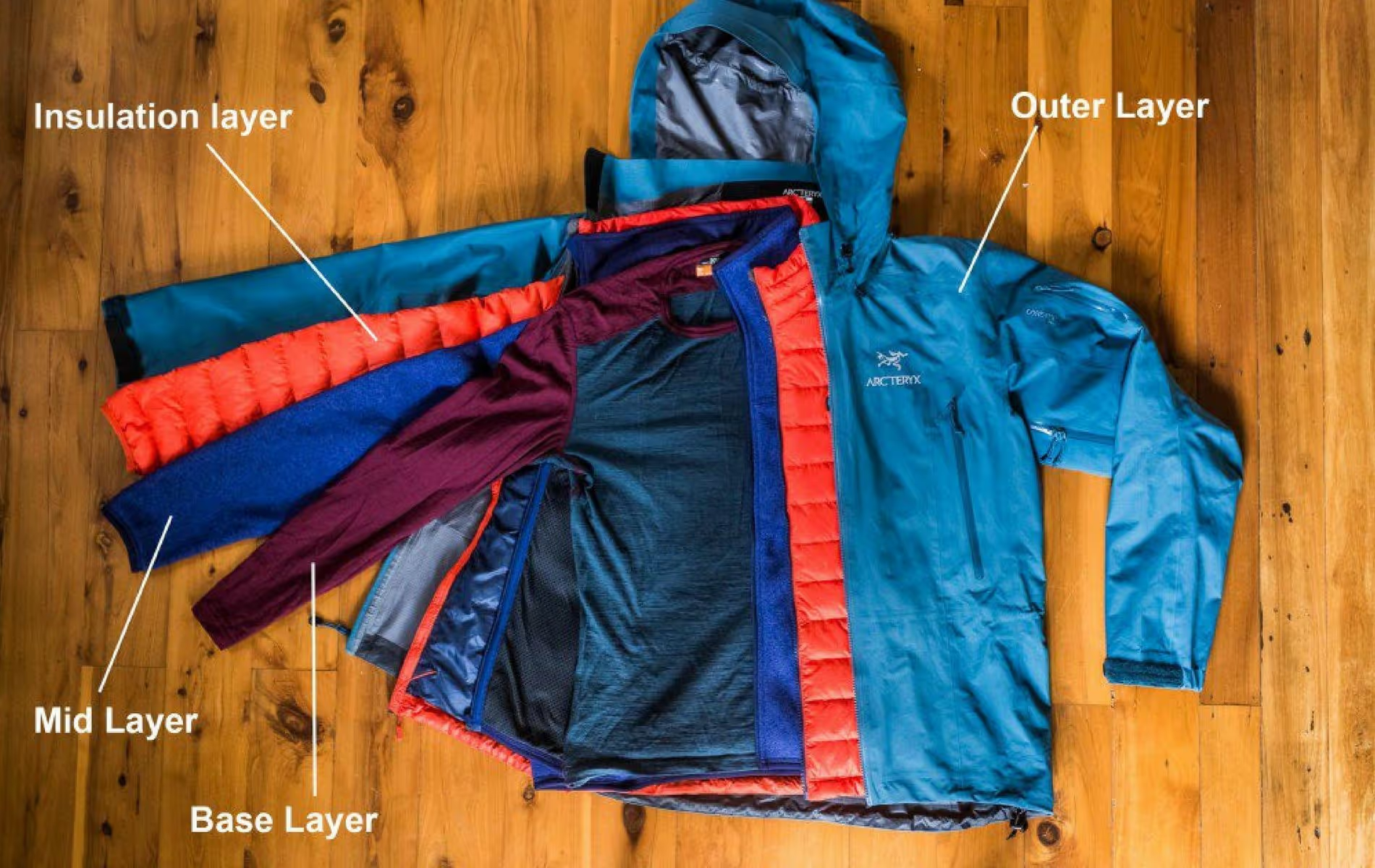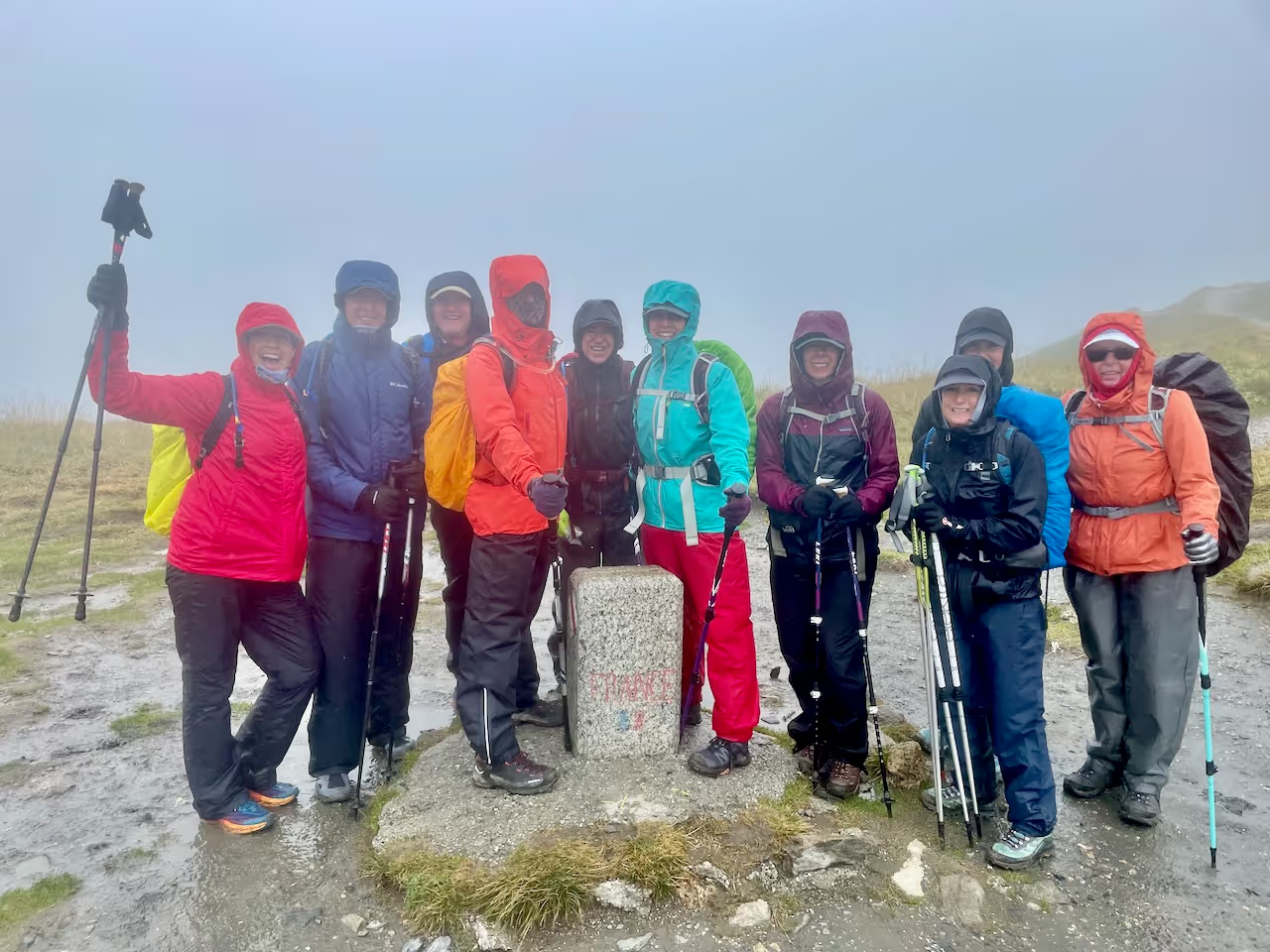
We've all heard it somewhere (and, if you've traveled with us at all, you've probably read it on one of our packing lists)- this mysterious idea of a 'versatile layering system'...
While the term may be commonplace in most outdoor circles, for many, the meaning remains confusing. "What, exactly, is a 'layering system', and what makes it 'versatile'?"
No fear! We are here to de-mystify the concept and help get you prepared for anything Mother Nature might throw your way on your next adventure...
That- in a nutshell- is what a 'versatile layering system' entails- having the necessary layers of clothing and gear to be prepared for inclement and/or quickly-changing weather. While weather forecasts are helpful, they are only so dependable- it's not overstating it to say having the right gear at hand when the weather takes a turn for the worse can be a life saver.

So- where do you start with these 'layers'? Good question...
Start with your base layers- the bottom layer you anticipate wearing for the day's adventure. The base layer’s primary purposes are temperature regulation and moisture management- keeping you warm while moving sweat away from your body. Depending on temperature forecasts, this may entail a simple, lightweight synthetic shirt or a heavy, long-sleeve thermal layer (wool or synthetic) up top, potentially combined with something to cover your legs. If temperatures are meant to be very cold, thermal leggings or lightweight running tights are a couple of options for your legs. If temps are in the normal/comfortable range, a base layer on your legs may not be necessary- hiking pants/shorts may suffice.
Pro Tip: Of course, everyone's body regulates temperature differently, so layering will differ person to person. Additionally, physical activity during your adventure will raise your body temperature- thus, be wise about what you choose to wear for a base layer, as they are the most difficult to remove once you're out adventuring. As the saying goes- 'Be bold- start cold!' If it's chilly in the morning but you know you'll be hiking uphill to start the day, skip the extra base layers knowing your body will warm up once you start moving.
(Before we move on, a quick note about cotton- Just say NO. Cotton is not an ideal fabric for outdoor use- it's bulky, heavy, emits odor and takes forever to dry- all of which are negative qualities in general, but especially in the outdoors. When considering your layering system, it's best to stick to synthetic and/or wool options- they’re lighter, don’t stink and dry much quicker.)
Next up- the mid-layer(s). The mid-layer is something easily added/removed to provide warmth and insulation in cold/windy weather. Mid-layers consist of items like a long sleeve quarter-zip pull-over, a full-zip hoodie, a lightweight fleece... For colder temps, a down or synthetic vest/jacket can be used as an additional mid-layer to provide extra warmth/insulation.
Pro Tip: The main idea behind a mid-layer is that it's there when you need it- temperatures drop, the wind picks up, etc.- but is 'minimal' when you don't. You'll want it to be something that is lightweight, compressible and doesn't take up a ton of room in your pack. For vests and/or jackets, look for light-weight/high-quality down (650-800 fill), as it's the most compressible and has a higher warmth-to-weight ratio.

Finally- the outer layer. The outer layer is what makes up your first line of defense against whatever the day's elements entail. This is typically some sort of hard-shell rain jacket and rain pants. Ideally, these live in your backpack and never see the light of day, but, as we mentioned earlier- having them close at hand if/when the elements do change could be a literal life-saver... Here, Gore-Tex is king- it's the best breathable-yet-waterproof membrane out there. Because of this, garments with Gore-Tex are typically at a higher price point than jackets with manufacturers' proprietary waterproofing- you pay for the good stuff. Depending on your destination and weather forecasts, shelling out for a Gore-Tex jacket might not be necessary. That said, if there's a chance for severe weather and you need to stay warm and dry, consider it an investment in your comfort and well-being.
Pro Tip: Rain Gear isn't just for rain. Anything that is waterproof is also windproof- putting your rain jacket and/or rain pants on in windy conditions can drastically improve your body's temperature regulation. Also- similar to the mid-layer(s)- you'll want your outer layer/rain gear to be a small, compact and lightweight. Look for gear that is 'packable'- meaning it can be zipped up into its own pocket. Finally- be sure to test your rain gear BEFORE you need it- there are few things worse than a rain jacket that isn't waterproof when you need it to be. If you find your rain jacket needs a waterproofing boost, check out Nikwax Tech Wash and TX-Direct waterproofing agents- they’ll bring your rain gear back to life.
Supplemental 'layers': In addition to the layers mentioned above, it's always a good idea to keep a pair of lightweight gloves handy, along with a beanie and a buff/neck gaiter, depending on the temperature range at your destination. Also- stashing a dry t-shirt and a dry pair of socks somewhere in your backpack can be a game-changer for staying warm and dry...
So- there you have it- a quick 'Versatile Layering System: 101'. The key is the versatility aspect: having multiple layers- ON HAND- that can be added/removed at a moment's notice to adjust to changing weather conditions. Once you have your layering system in place, you should be able to enjoy your adventure, no matter what the weather demands. As another famous outdoor saying goes- 'There's no such thing as bad weather- only bad gear...' Be prepared and you'll be good to go!
Adventure: ON!
